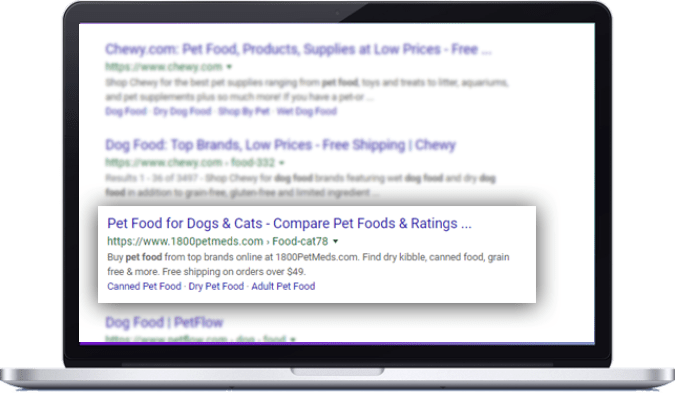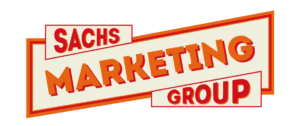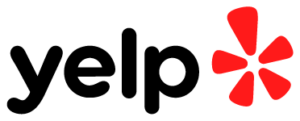BOOST YOUR ONLINE PRESENCE WITH OUR EXPERT SEO
(SEARCH ENGINE OPTIMIZATION) SERVICES
At Sachs Marketing Group, we pride ourselves on being a leading SEO company dedicated to helping businesses achieve their online marketing goals.
Our comprehensive SEO and digital marketing services are designed to increase your website’s visibility, drive targeted traffic, and improve your search engine rankings.
Whether you're looking for state-of-the-art search engine optimization services or need expert guidance to enhance your online presence, our team has the experience and expertise to deliver exceptional results.
UNDERSTANDING SEO: WHAT IS SEARCH ENGINE OPTIMIZATION (SEO)?
In today’s digital landscape, Search Engine Optimization (SEO) as a service is critical in ensuring that your business stands out online.
SEO, or Search Engine Optimization, involves a series of strategies to improve your website’s visibility on search engines like Google. This is vital for attracting more visitors to your site, which ultimately leads to increased conversions and revenue.
For businesses looking for effective marketing and SEO services, understanding the fundamentals of SEO is key to achieving long-term success in the digital marketplace.

WHAT ARE SEO SERVICES?
Search Engine Optimization (SEO) services encompass a range of tactics and strategies designed to enhance your website’s online visibility.
This includes optimizing your site’s content, structure, and performance to make it more appealing to search engine results pages (SERPs). SEO has extensive benefits, from higher SERP rankings to increased web traffic and better user engagement.
Whether you're a small business or a large enterprise, investing in professional SEO services ensures that your website reaches its full potential.

SEO VS. OTHER DIGITAL MARKETING STRATEGIES
While there are many approaches to marketing, Search Engine Optimization (SEO) remains one of the most effective strategies for long-term success.
Unlike paid advertising, which can generate immediate traffic but requires ongoing investment, SEO's benefits grow over time. SEO focuses on building a strong foundation of organic search traffic, which can be more sustainable and cost-effective in the long run.
Compared to other marketing services, SEO offers a unique advantage in establishing your business as a trusted authority in your industry.
BOOST YOUR ONLINE PRESENCE WITH OUR EXPERT SEO (SEARCH ENGINE OPTIMIZATION) SERVICES
Achieving success with Search Engine Optimization (SEO) and digital marketing services requires a comprehensive and well-rounded approach.
An effective SEO strategy involves multiple components working together to improve your website’s search engine rankings and online visibility.
By focusing on these critical factors, Sachs Marketing Group ensures that your SEO efforts yield the best possible results, helping your business stand out in a competitive digital landscape.

KEYWORD RESEARCH
Thorough keyword research and identification of the right keywords are the foundation of any successful SEO and keyword optimization strategy.
By targeting relevant search terms within your industry, we ensure your content aligns with what potential customers are searching for.
Effective keyword research helps us understand your audience's needs and craft quality content that resonates with them while improving your search rankings.

ON-PAGE SEO
On-page SEO involves optimizing individual pages on your website to make them more compatible for search engine results. Key elements include optimizing title tags, meta descriptions, header tags, and developing quality content to ensure your site ranks higher for targeted keywords.
Proper on-page SEO and keyword optimization improve search engine visibility and enhance the user experience, leading to higher engagement and conversion rates.

OFF-PAGE SEO
Building high-quality backlinks from reputable sites is crucial for improving your website’s authority and rankings. Off-page SEO also includes social media signals, guest blogging, and other strategies to enhance your online reputation. These efforts help establish your site as a trusted resource in your industry, further boosting your search engine performance.

LOCAL SEO
Local SEO is essential for businesses looking to capture local customers. By optimizing for location-based keywords and ensuring your business information is consistent across the web, we help you rank higher in local search results. Local SEO is particularly important for businesses targeting customers in specific geographic areas, driving more foot traffic and local leads.e.

TECHNICAL SEO
Ensuring your website is technically sound is vital for search engine performance. This includes optimizing site speed, ensuring mobile-friendliness, improving crawlability, and fixing any technical issues that could hinder your rankings. Technical SEO ensures that search engines can effectively index and rank your site, leading to better overall performance in organic search results.
By focusing on these key performance factors, our marketing and SEO services deliver measurable results, helping your business thrive digitally.
PROVEN TACTICS FOR EFFECTIVE SEO
Implementing Search Engine Optimization (SEO) correctly requires a strategic approach combining best practices with ongoing optimization. At Sachs Marketing Group, we utilize proven tactics that ensure your website ranks well and attracts and retains the right audience. By focusing on these key areas, our SEO and internet marketing services deliver sustainable, long-term results that drive your business forward.
SITE AUDITS
A comprehensive site audit is the first step in any successful SEO campaign.
We thoroughly examine your website’s current performance, identifying any issues that could be affecting your rankings. This includes analyzing everything from your site’s structure to its content and technical aspects.
The insights gained from a site audit allow us to develop a customized SEO strategy tailored to your business needs.
CONTENT OPTIMIZATION
High-quality content is crucial for SEO success.
We ensure that your website’s content is engaging, relevant, and optimized for target keywords within your respective industry.
Our content optimization process includes improving existing content and creating new content that meets the needs of both search engines and your audience.
LINK BUILDING
Building a strong backlink profile is essential for improving your website’s authority and search engine rankings.
Our link-building strategies focus on acquiring high-quality, relevant backlinks from trusted sources. This boosts your site’s credibility and helps it rank higher for competitive keywords.
CONTENT OPTIMIZATION
High-quality content is crucial for SEO success.
We ensure that your website’s content is engaging, relevant, and optimized for target keywords within your respective industry.
Our content optimization process includes improving existing content and creating new content that meets the needs of both search engines and your audience.
SITE AUDITS
A comprehensive site audit is the first step in any successful SEO campaign.
We thoroughly examine your website’s current performance, identifying any issues that could be affecting your rankings. This includes analyzing everything from your site’s structure to its content and technical aspects.
The insights gained from a site audit allow us to develop a customized SEO strategy tailored to your business needs.
These proven tactics form the foundation of our SEO services, ensuring that your business is equipped with a successful SEO strategy that achieves lasting success online.
THE BENEFITS OF SEO FOR YOUR BUSINESS
BENEFITS OF SEO
Search Engine Optimization (SEO) offers numerous advantages that can significantly impact your business growth:

INCREASED ONLINE VISIBILITY
One of SEO's primary benefits is enhanced visibility on search engines like Google Search. By optimizing your website for relevant keywords, you ensure that your business appears at the top of search results when potential customers are looking for your products or services.

HIGHER QUALITY TRAFFIC
SEO targets users who are actively searching for what your business offers. This means the traffic you receive from SEO is more likely to convert into leads and sales, making it a highly effective digital marketing strategy.

COST-EFFECTIVE MARKETING
Unlike paid advertising, which requires continuous investment, the benefits of SEO compound over time. Once your website ranks well, it can continue to attract organic traffic without the ongoing costs associated with PPC management campaigns.

BUILDS TRUST AND CREDIBILITY
Users often perceive websites that appear at the top of search results as more trustworthy and credible. By implementing effective SEO services, you can establish your brand as an industry authority, increasing customer trust and loyalty.

LONG-TERM RESULTS
SEO provides sustainable results that can benefit your business for years to come. Unlike short-term marketing tactics, the impact of SEO grows over time, making it a valuable investment for the long haul.
By leveraging these SEO benefits, your business can strengthen its online presence, attract more qualified leads, and ultimately drive more revenue.
Investing in SEO and internet marketing services is crucial for staying competitive in today’s digital world. Let Sachs Marketing Group be the SEO service provider you can rely on in taking your business to the next level.
SEO SERVICES WITH PROVEN RESULTS
At Sachs Marketing Group, we pride ourselves on delivering SEO services that generate real, measurable results. Our successful track record speaks for itself, with countless businesses across various industries achieving top search engine rankings, increased website traffic - which we analyze and report on using Google Analytics 4, and higher conversion rates through our comprehensive SEO and digital marketing services. As the best SEO company Los Angeles has to offer, we are dedicated to helping your business achieve the same level of success.
Our approach to SEO marketing for small businesses and large enterprises alike is rooted in data-driven strategies, personalized service, and a commitment to excellence. We’ve helped businesses rank for competitive keywords across numerous industries, ensuring they reach the right audience at the right time.
Partner with Sachs Marketing Group to experience SEO benefits and elevate your business’s online presence with proven strategies that deliver results.

WHY CHOOSE SACHS MARKETING GROUP OVER OTHER SEO COMPANIES?
We recognize that no two businesses are the same. That’s why we develop customized SEO strategies tailored to your specific goals, industry, and target audience. Whether you need SEO marketing for small business or enterprise-level solutions, our personalized approach ensures that you get the best results for your unique situation.
By choosing Sachs Marketing Group, you’re partnering with an SEO and internet marketing firm that is dedicated to helping your business succeed in the digital world.
SEO MARKETING FOR SMALL BUSINESS SUCCESS
SEO is a powerful marketing channel for driving lead generation and increasing conversions, especially for small businesses.
By optimizing your website for search engines, you ensure that your business appears prominently when potential customers search for products or services like yours. This targeted visibility attracts more visitors to your site and helps convert those visitors into loyal customers.
At Sachs Marketing Group, our SEO and digital marketing services are designed to maximize your online presence, making it easier for your business to generate leads and grow.
BENEFITS OF LOCAL SEO FOR LEAD GENERATION
By optimizing your website for local keywords, you ensure that your business appears at the top of search results for users in your area.
By leveraging the power of SEO marketing for small businesses, Sachs Marketing Group helps you attract more qualified leads and convert them into customers, driving your business's growth and success.
SACHS MARKETING GROUP: YOUR TRUSTED SEO COMPANY
Choosing the right SEO company is crucial to achieving your business goals, and Sachs Marketing Group is proud to be recognized as the best SEO company Los Angeles has to offer. Our commitment to excellence, personalized approach, and proven track record make us the ideal partner for your SEO needs. Here’s why businesses trust us:
EXPERTISE IN ALL ASPECTS OF SEO
From on-page optimization to advanced technical SEO, our team has the knowledge and experience to handle every aspect of your SEO strategy.
CUSTOMIZED SEO STRATEGIES
We understand that every business is unique. That’s why we create tailored SEO strategies that align with your specific goals, industry, and target audience.
PROVEN TRACK RECORD
We’ve helped countless businesses achieve top search engine rankings and increased online visibility, consistently delivering results that drive growth and success.
A DEDICATED TEAM OF PROFESSIONALS
Our team of SEO experts is dedicated to staying ahead of industry trends and continuously refining our strategies to ensure your business remains competitive.
LOCAL SEO STRATEGIES
As a comprehensive SEO and digital marketing company, we offer many services that complement and enhance your SEO efforts, including content marketing, social media marketing, and more.
Partner with Sachs Marketing Group and let us help you achieve your online marketing goals with our top-notch SEO and digital marketing services.
READY TO ELEVATE YOUR ONLINE PRESENCE?
Don’t let your competitors outrank you. Take the first step towards boosting your website’s visibility and driving more qualified leads with expert SEO services from Sachs Marketing Group. Whether you’re a small business looking for local SEO strategies, a product website looking for ecommerce SEO, or an enterprise needing comprehensive digital marketing solutions, we’re here to help you achieve your goals.
Get Your Free Proposal today and discover how our tailored SEO and digital marketing services can transform your online presence and drive real results for your business.
Contact us now to start your journey to SEO success!



